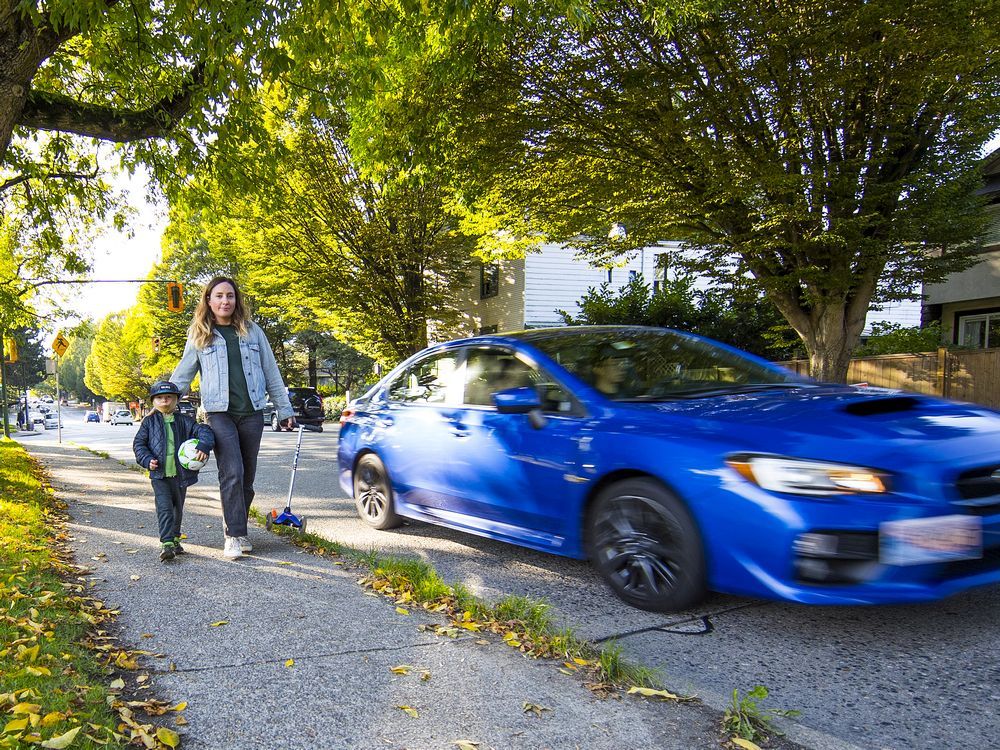Vancouver council delays decision on east-west arterial road

Credit to Author: Matt Robinson| Date: Tue, 01 Oct 2019 23:52:42 +0000
Vancouver city councillors delayed on Tuesday a decision regarding a proposed and controversial major traffic route through the city’s Strathcona neighbourhood.
Staff at the city had recommended transforming Prior Street into a permanent east-west arterial route connecting downtown to East Vancouver, despite having taken direction from a previous council to consider downgrading and calming the road for local use.
After hearing from dozens of speakers on the matter, councillors opted to delay a vote until Wednesday.
Many residents offered impassioned speeches describing with some distress the traffic and pollution-related dangers they and their families faced daily by having a freeway-like arterial route run through their residential neighbourhood.
Penny Crawford, a director of the Strathcona Residents Association, warned councillors that “staff are not prioritizing safety” in putting forward Prior Street as their preferred arterial.
She said the spacious-feeling artistic renderings in the city’s plan did not reflect the street’s true space constraints — a concern shared by other residents, some of whom spoke about the physical danger posed by cars speeding through a neighbourhood known for its population of young families. One speaker suggested the sketches were so fantastic they invoked a scene reminiscent of the grand Avenue des Champs-Élysées in Paris.
Genevieve Monro was among many who spoke of the health consequences of living along a busy route filled with truck and other traffic. She said she is unable to open her windows because doing so fills the rooms with visible, toxic soot and exhaust. She attributed her young child’s asthma to the local air pollution, as other parents did in kind.
“It seems criminal. It should be against the law,” she said.
Katie Lewis said the problem was so pronounced that she could wipe the pollution off her windows.
“I can’t believe we’re here talking about making this worse,” she said.
Andrew Ling, who lives close to the rail line that runs through the neighbourhood, said he feared the consequences of increased train traffic in years to come. It is already a problem in his household.
“How do you explain fine particulate matter to a three-year-old” when you have to close your windows on a hot day, Long asked councillors.
The city-sparked Flats Arterial Community Panel recently endorsed an entirely different route for the city to pursue — one that would travel along National Avenue and up Charles Street.
Carol Kong, a transportation engineer with the city, told councillors the National option would demand street widening, put transit further from homes, have a highway feel to it, and cost more than any other option, at $400 million.
Meanwhile, Lon LaClaire, the city’s transportation director, told councillors Tuesday that the Prior option would include a $125-million rail bridge that would not need to be maintained by the city, and claimed the street would see slower traffic due to the removal of the viaducts and introduction of several new traffic lights. But it would also include an underpass to send traffic past the rail lines without delay.
Shortly before hearing from speakers, Jerry Dobrovolny, the city’s head engineer, told councillors they could consider downgrading Prior to a collector street with a 30 kph speed limit near Strathcona Park. A collector street would not be intended for use by through traffic, he said.
MP Jenny Kwan, who also spoke during the hearing, was among those who pointed out that the Prior Street route would place an underpass directly adjacent to Villa Cathay, a care home for seniors.
“They deserve to be treated better than this,” Kwan said of its residents.
Philip Wong, a representative of Produce Row, a group of fresh food wholesalers along Malkin Drive in Strathcona, said he preferred the Prior Street route. Malkin had been considered by the city to be a potential arterial route, but it was later discarded as an option. About 4,000 trucks travel to and from Produce Row each week, Dobrovolny said.
Rhonda Lui, a project director with Providence Health Care working on the redevelopment of St. Paul’s Hospital, said Providence supported either of the two leading options, but it wanted a decision made quickly.